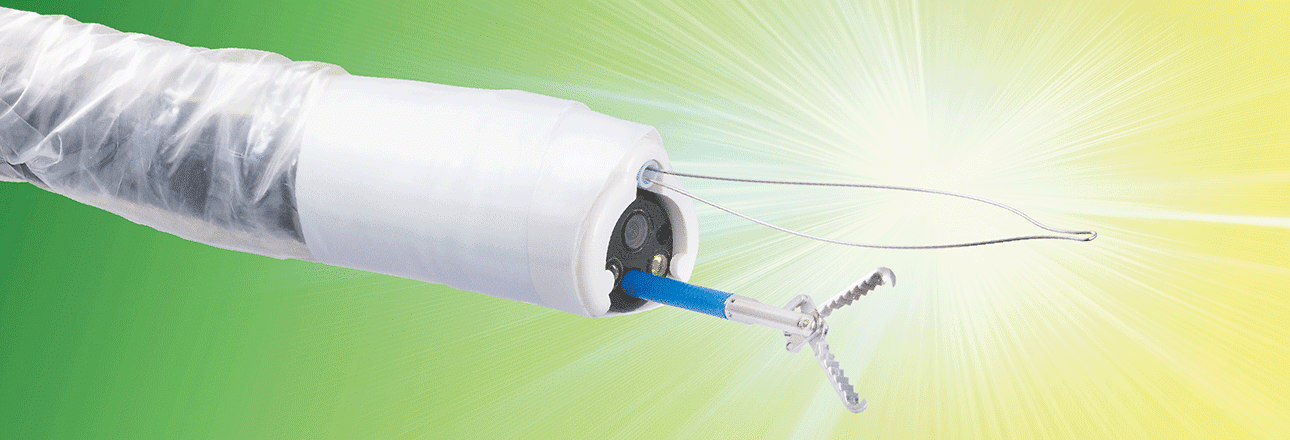The novel EMR+ technique uses an external additional working channel (AWC®) and a poloxamer agent for submucosal injection (LiftUp®). A preclinical study evaluated the technique in the EASIE-R1 Simulator (explanted pig stomach, 22 lesions) and subsequently in 13 in vivo resections in 3 domestic pigs. In vivo, resection was macroscopically complete in 92.3 %. Median procedure time was 5 min and median size of the resected specimens was 35 mm x 35 mm x 11 mm. Adverse events did not occur except from one minor periprocedural bleeding managed by coagulation.
B Meier et al., Ludwigsburg Hospital, Ludwigsburg, Germany, presented a preclinical study evaluating a modified EMR technique (EMR+) using an additional working channel (AWC, Ovesco Endoscopy) and a new agent for submucosal injection (LiftUp, Ovesco Endoscopy). The EMR+ technique is a modified grasp and snare technique and allows for en-bloc resection of larger polyps, which could be related with lower recurrence rates when compared to piecemeal endoscopic mucosal resection (EMR) and with lower complication rates when compared to endoscopic submucosal dissection (ESD).
After the technique was established, 22 ex vivo resections were performed (EASIE-R1 Simulator, explanted pig stomach). Primary aim of this setting was to develop the concept of EMR+ (e.g. positioning of instruments, injection technique, resection technique). The procedure time was measured from the beginning of submucosal injection to the extraction of the resected specimen and lasted in median 7 min (range 5-11 min). Median size of the resected specimens was 30 mm x 26 mm x 11 mm.
Afterwards, the technique was transferred and evaluated in 13 EMR+ resections in in vivo porcine models (stomachs of 3 domestic pigs). In vivo, median procedure time was 5 min (range 3-12) and median size of resected specimens was 35 mm x 35 mm x 11 mm. Major adverse events did not occur. During one resection (7.7 %), minor periprocedural bleeding occurred which could be managed by coagulation.
The authors concluded that EMR+ showed to be effective and safe in the porcine model and allowed for en-bloc resection of lesions up to 40 mm. Further evaluation of the novel technique in clinical comparative trials is needed.
Novel technique for endoscopic en-bloc resection (EMR+) – Evaluation in a porcine model.
Meier B, Wannhoff A, Klinger C, Caca K.
World J Gastroenterol 2019; 25(28): 3764-3774


 English
English  Français
Français 